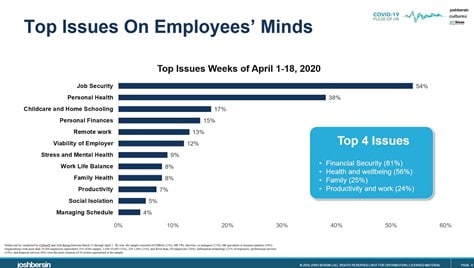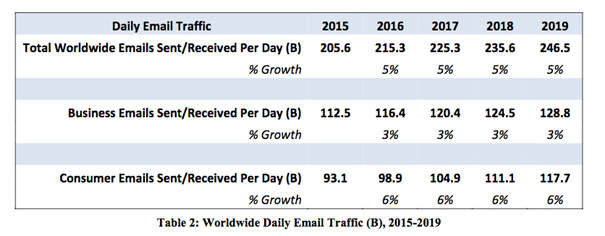During the pandemic, the digital workplace became a fundamental digital tool to ensure communication and collaboration could continue. Platforms like the corporate intranet allowed employers to manage the crisis, communicate important announcements, and ensure everyone received the same message. It proved so essential that SharePoint doubled its audience, now counting over 200 million daily active users. Collaboration tools, like Microsoft Teams, also became so fundamental that Teams jumped to 115 million daily users in November 2020 up from 75 million in April.
Digital workplace tools will continue to grow in popularity and help leaders tackle new workplace challenges.
6 leadership challenges and how the digital workplace can help
Uncertainty
Uncertainty appears to be the only sure thing. With long-term planning more difficult during the pandemic, every decision has been made with the caveat that things might have to change last minute. In business, this level of uncertainty can be damaging, but under the circumstances, unavoidable. While the digital workplace can’t provide certainty to leaders it can help ease the doubts and fears of employees, by offering an internal communications platform.
Why are internal communications business-critical?
When uncertainty filters down to employees, productivity suffers. Staff can’t be expected to perform at their best if they are worried about their jobs or safety. In a survey from April 2020, job security was the number one worry for 54% of employees.
When a crisis hits, the first leadership challenge is to implement a crisis management plan. By having this prepared in advance, employees can be reassured management is handling the situation. The right digital workplace helps by providing tools, like crisis management templates for the intranet.
Once the initial situation is dealt with, it’s time to reinstate a sense of security among employees. This is achieved with regular communications. For example, posting key announcements on the intranet where everyone can see them.
Disconnected and disengaged remote workers
The move to a remote or hybrid workplace is becoming a long-term strategy for many businesses. In fact, more than a quarter of employees planned to adopt hybrid work by the end of 2021. However, if the move to remote is not accompanied by proper planning those working from home can become disconnected and disengaged. A key leadership challenge is connecting employees.
Research supports this fear, with over half of respondents to a 2019 study saying they felt disconnected from their organization. Lack of effective communication was cited by nearly a fifth as the driving factor.
It doesn’t have to be this way. Building a connection with remote employees is possible with the right digital tools. Where a lack of communication is the issue, a tool like the corporate intranet is a solution.
An intranet provides the right platform for top-down communications, allowing leadership to post a message where employees will see it. With millennial employees having an 8-second attention span, putting the message right in front of them is key to visibility. Email is static and lost in the 121 emails the average employee receives daily, catchy updates on the intranet are more suited to today’s workforce.
Loss of company culture
One of the main leadership challenges businesses fear in the move to remote work is the loss of company culture.
Culture is defined as ‘’the shared values, attributes, and characteristics of an organization’’. (The Balance Careers). It doesn’t refer to a place but a mindset that is built through the actions and words of those in the organization, and starts at the top. Creating or maintaining an inclusive culture in a virtual office is possible when leadership takes positive actions to inspire it.
In the move to remote work, building a teamwork culture is more important than ever. Teamwork has a positive impact on employee engagement, improves happiness, and increases productivity. However, getting everyone to work together is difficult if people don’t know what they are working towards and why. In a remote team, teamwork is impossible if employees don’t have the right tools. Providing all employees with the communication and collaboration tools they need is the first step to maintaining and building a strong remote culture.

Lack of alignment
When employees are coming into the office every day and are in regular contact with each other, messages pass easily and people hear about changes. With employees spending more time remote, it can be easy to miss important announcements and updates. More than half of employees in a report conducted by Igloo said they missed key information that was given in person. A lack of alignment and internal communications can lead to inefficiencies.
A digital workplace is a key to keeping employees on the same page. Ensure people get the right messages by placing them in the right channel.
- Intranet: Used for company-wide communication and top-down messages targeted by department. Suitable for important announcements and passing information.
- Microsoft Teams: A more collaborative platform that allows colleagues and teams to work together in real-time. More suited to day-to-day discussions, team announcements, and passing information that requires input from everyone.
Low morale
Boosting employee morale through a pandemic was always going to be a tough ask. Low morale continues to be a leadership challenge and restoring energy will take effort. For some, it’s more than just the tiredness of working from home, but increased stress leading to exhaustion. In a survey by Monster, 69% of employees reported burnout from working from home. Worryingly, over 50% of employees have needed to take a mental health day while working from home during the pandemic.
There are concrete ways to help:
- Provide employees with the collaboration and communication platforms they need to do their job.
- Recognize employee achievements by giving shout-outs to employees on the intranet.
- Reward a job well done through monetary and non-monetary means, like experiences.
- Accommodate more flexibility. Allow work from home employees to choose hours that suit them, within a permitted time frame.
- When the situation permits, introduce hybrid work where employees can spend some days in the office and the rest of the week at home.
Read: Digital Wellbeing in the Digital Workplace
Safe return to the office
It is now safe to return to the office, but employees are still wary, and not all want to go back full time. Ensuring some employees can go back safely requires logistical planning. The right digital workplace can help. Powell Intranets Flexdesk feature allows employees to book their desks in advance. This ensures a record is kept of who is in on any one day and avoids too many people turning up at the one time.
Conclusion
The first step to tackling leadership challenges is identifying the obstacles that need to be overcome. While some issues are easily spotted, others like low morale or health and safety concerns are not as obvious to those in charge. So it’s fundamental that employees have the tools that allow them to communicate any concerns up the chain. The digital workplace alone can’t do this, but it does facilitate management to build an open culture and provide tools for productivity and opportunities to interact and boost engagement.
Powell Software offers a complete digital workplace solution combining a corporate intranet platform, Powell Intranet, with Powell Governance, the Microsoft Teams app for improved governance and employee experience.
Discover how Powell Software solutions helped RSL LifeCare connect a distributed workforce and provide easy access to policies for remote and field workers.







